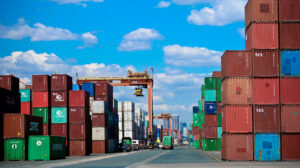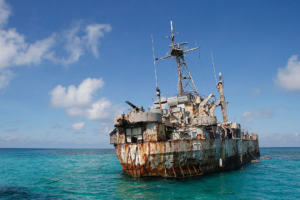By Beatriz Marie D. Cruz, Reporter
THE WORLD BANK (WB) kept Philippine growth forecasts for 2024 and 2025 amid improved global conditions and better trade, but said delayed policy easing and China’s property sector woes pose risks to the outlook.
In its Philippine Economic Update report, the lender said it expects growth at 5.8% this year and 5.9% next year.
“The Philippines has sustained its growth momentum into the first quarter of 2024, supported by an improvement in global economic activity,” World Bank Senior Economist Ralph van Doorn separately told a news briefing on Tuesday.
“Growth will increase to an average of 5.9% between 2024 and 2026, which will be anchored by a strong domestic demand and a pickup in global growth,” he added.
These are below the government’s 6-7% target for 2024 and 6.5-7.5% for 2025.
The World Bank expects Philippine economic growth at 5.9% for 2026, which is also below the state’s 6.5-8% estimate until 2028.
“The positive outlook hinges on successfully containing inflation and transitioning to a more accommodative monetary policy, which will support private domestic demand,” according to the report.
The World Bank forecasts inflation to remain within the Philippine central bank’s 2-4% target in the next few years.
Inflation quickened for a third straight month to 3.8% in April as food and transport costs picked up. The local statistics agency will release May inflation data on Wednesday.
Escalating geopolitical tensions could fan global energy prices and disrupt trade and investment activities, Mr. Van Doorn said. This could reduce household disposable incomes and weaken consumption.
Growing trade protectionist measures amid global shocks could also affect trade.
“There’s also a risk of a prolonged downturn in the property sector in China, which could lead to softer growth and reduced imports from the region, resulting in active spillovers to manufacturing and tourism in the region,” Mr. Van Doorn said.
Lasting impacts of the El Niño dry spell and “stronger-than-expected” La Niña could also affect growth prospects.
“These disruptions include impacts on educational services, reductions in farm yields and constraints on water and electricity supplies,” Ndiame Diop, World Bank country director for Brunei, Malaysia, the Philippines and Thailand, said in a statement.
Sticky inflation could also delay rate cuts and dampen the country’s growth outlook, he said.
Last month, the Philippine central bank kept its key policy rate at a 17-year high of 6.5%, even as it signaled a rate cut by August.
To meet growth targets, the Philippines should manage inflation through nonmonetary actions, including timely and adequate food imports and aid to poor households, the World Bank said.
The government should also boost tax revenues to meet fiscal targets. “An inability to generate additional revenues could lead to further reductions in public expenditure, or an increase in borrowing, which could lead to higher debt,” it added.
The passage of five key tax measures is expected to raise revenues by 0.2 percentage point, according to the report.
These include the value-added tax on digital service providers, excise tax on single-use plastics, the fourth package of the Comprehensive Tax Reform Program, changes to the mining fiscal regime and the motor vehicle users’ charge.
The government should also broaden the tax base for consumption and personal income taxes, rationalize tax incentives and strengthen tax administration, the World Bank said.
INCOME STATUSMeanwhile, it might take as long as three years before the Philippines reaches upper middle-income status.
“We do expect the Philippines, at its current growth rates, to cross the threshold in the next few years,” Mr. Van Doorn said.
The government of Philippine President Ferdinand R. Marcos, Jr. earlier said it is on track to attain upper middle-income status by 2025.
“When exactly that will happen is something that we don’t know, because the threshold itself is also determined every year based on global exchange rate conditions, so it’s adjusted every year,” Mr. Van Doorn said.
To be considered an upper middle-income economy, a country’s gross national income (GNI) per capita must be $4,466 to $13,845. The Philippines is classified as a lower middle-income country with a $3,950 GNI per capita.
But the country’s tax to GDP (gross domestic product) ratio remains well below upper middle-income levels, Mr. Van Doorn said.
The American Chamber of Commerce of the Philippines, Inc. (AmCham) said the country would attain upper middle-income status through key tax and investment measures.
“We continue to support and advocate for reforms that will grow investments and jobs,” AmCham Executive Director Ebb Hinchliffe said in a Viber message.
These include the CREATE to Maximize Opportunities for Reinvigorating the Economy bill, rationalization of the mining fiscal regime and measures that will expand internet connectivity and set up a Philippine Airports Authority.
“Development cannot simply be measured in terms of economic growth but necessitates the creation of institutions to sustain growth amid social and environmental disruptions,” Leonardo A. Lanzona, who teaches economics at the Ateneo de Manila University, said in a Facebook Messenger chat.
The true measure of a country’s development is the quality of its people’s lives, IBON Foundation Executive Director Jose Enrique A. Africa said in a Viber message.





